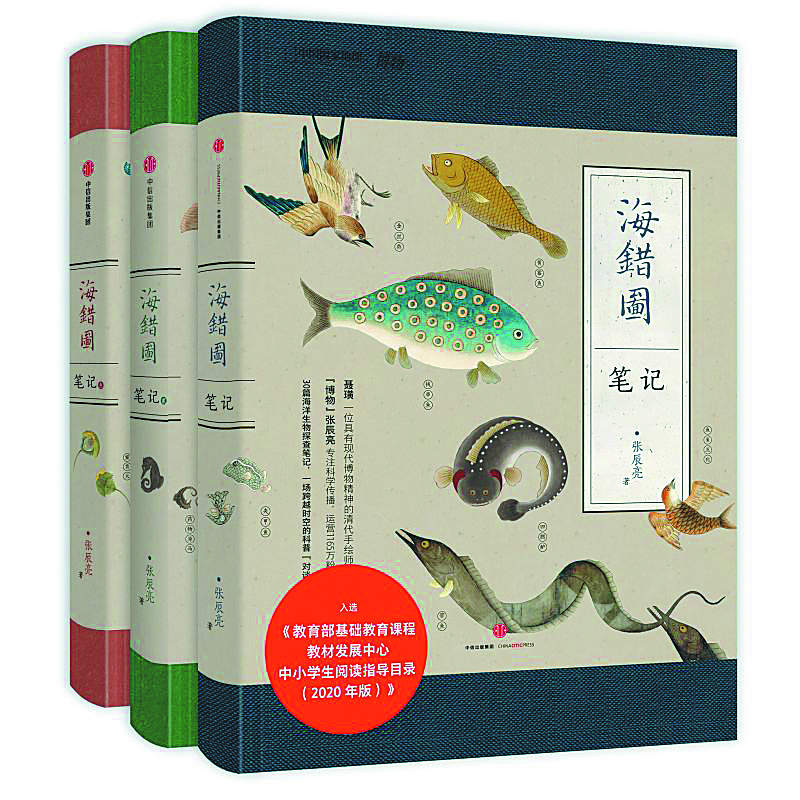Blogger praised for popularizing traditional compilation
 0 Comment(s)
0 Comment(s) Print
Print E-mail China Daily, September 8, 2022
E-mail China Daily, September 8, 2022

Notes of Hai Cuo Tu, a three-volume book published by CITIC Press Group from 2016 to 2019, is a prime example of how an ancient work on natural history has been popularized in recent years.
The book was inspired by Hai Cuo Tu, a work on marine life that dates back three centuries and features drawings by Chinese artist, painter and biologist Nie Huang, who wrote it during the reign of Emperor Kangxi (1661-1722), the second emperor of the Qing Dynasty (1644-1911).
Hai Cuo Tu, which documents more than 300 species of marine life in vivid writing and paintings, was later favored by Emperor Qianlong, who reigned from 1735 to 1796. He had the work remounted and kept in the Forbidden City's royal library.
Despite containing some inaccuracies, and its inclusion of legendary creatures, the book is still valuable for gaining a modern understanding of the historical marine environment, according to Zhang Chenliang, the author of Notes of Hai Cuo Tu.
Zhang, 34, a science blogger who has 6.3 million followers on Sina Weibo, saw Hai Cuo Tu when he visited an exhibition of ancient books at the Palace Museum, also known as the Forbidden City, when he was a student at middle school.
He studied the creatures in the book from the perspective of modern biology, and also identified them. The notes Zhang took during his studies were included in Notes of Hai Cuo Tu, which has sold well.
Nie, who lived during the Qing Dynasty, traveled across China to draw the maps in Hai Cuo Tu, visiting a number of provinces, including Hebei, Zhejiang and Fujian.
Zhang also visited several provinces and abroad to search for clues about Hai Cuo Tu. He even went to the massive No 8 Seafood Market in Xiamen, Fujian province, many times. "It was like a free exhibition hall for marine life," he said.
The notes taken by Zhang are informative, down-to-earth, and they accompany concepts for marine ecology and protecting biological diversity-inspiring readers to understand and explore the ocean world.
Liu Shujuan, who edited Notes of Hai Cuo Tu, said: "Zhang Chenliang has used the way in which young people behave-and their language-to communicate with readers, providing a good balance of professional science and interesting, thought-provoking writing. Zhang has brought natural history out of its ivory tower."
She added that she hopes Notes of Hai Cuo Tu will inspire readers to discover and observe the natural world.
"Young people's love for traditional Chinese culture and natural history will help the book sell well not only at the time of publication, but also over a long period," Liu said.






Go to Forum >>0 Comment(s)